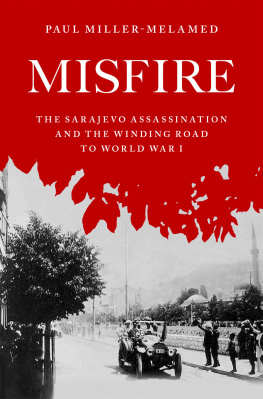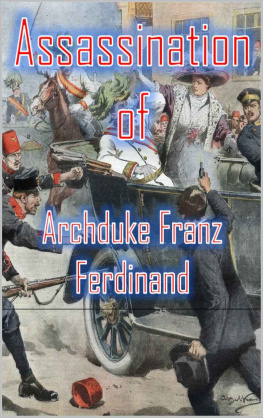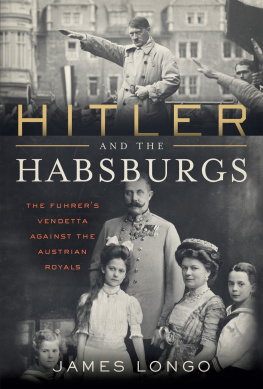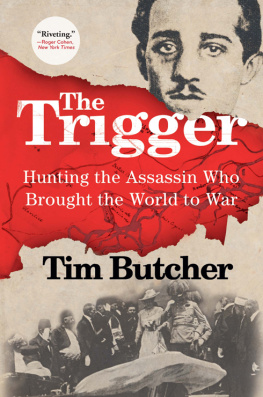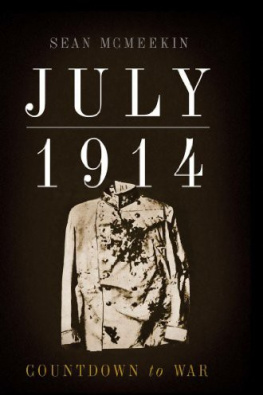1914
A Tale of Two Nations, Volume 1
Melina Druga
Published by Sun Up Press, 2021.
While every precaution has been taken in the preparation of this book, the publisher assumes no responsibility for errors or omissions, or for damages resulting from the use of the information contained herein.
1914
First edition. April 15, 2021.
Copyright 2021 Melina Druga.
ISBN: 978-1393188971
Written by Melina Druga.
10 9 8 7 6 5 4 3 2 1
W orld War I, like most wars, was started by politicians and fought by ordinary men who generally had no stake in the conflict. They fought because of patriotic fervor or a sense of adventure, and millions lost their lives as a consequence.
Between 1914 and 1918, nearly 5 million Americans and Canadians served in the war. While today the two neighboring nations share a sense of common heritage, language, history and cooperation, in the 1910s there was a lingering sense of animosity.
The Canada of 1914 was much different from the Canada of today. It was less than 50 years old, founded primarily by English and French decedents, and had been the refuge of Loyalists during and after the American Revolution. It was a dominion of the British Empire, autonomous when it came to everything but foreign affairs. Its population during the 1911 census was 7.2 million, not much larger than the population of Greater Toronto 100 years later.
The United States had a population 13 times larger, at 92.2 million strong, and played a greater role on the world stage. Many in the U.S. felt Canada should be part of the union, as a natural extension of Manifest Destiny, and countless Canadians feared annexation. Immediately following the American Civil War, the Fenian Brotherhood, Irishmen who had served in the Union Army, conducted raids into Southern Canada in the hopes of agitating Great Britain. A few years later, Canada had an interest in purchasing Alaska, but negotiations favored the Americans. The final blow was the attempt to establish a trade reciprocity agreement between the U.S. and Canada. The agreement was rejected by Congress on multiple occasions, and in the 1911 election, by the Canadian electorate.
On the eve of the Great War, newspapers in both the U.S. and Canada were filled with news of the upcoming conflict; the great European powers were at each others throats, figuratively and perhaps soon literally. How each nation viewed the war, however, betrayed its interests and shaped public opinion.
A Tale of Two Nations is the story of North American countries that found themselves embroiled in an European war one by circumstance and one by choice. It discusses two pivotal events from each year of the Great War one from an American perspective and one from a Canadian one and reveals how newspapers at the time handled wartime coverage.
A Tale of Two Nations does not look at the First World War with the benefit of hindsight and analysis. Instead, it uses contemporary newspaper reports that often were inaccurate, incomplete or even chaotic. Wartime censorship and bias also played a role.
It is as much the story of journalism as it is the story of World War I. In the early 20th century, the newspaper was king. Many towns and cities had multiple papers, and it was common for larger papers to print multiple editions. Most articles had no bylines, and publications filled their pages with as much news as possible, with some news briefs being as short as a sentence or two.
In Part one, 1914, the war begins. Canada is proud to contribute to the war effort while the United States declares its neutrality.
Royal Couple Slain by Assassin
I magine you have access to a time machine. You travel to various locations in June 1914 and stop at newsstands to see what locals are discussing. Newspapers in Canada and the U.S. are full of ads hoping to snag the tired city slicker looking for adventure. You could travel from New York City to Niagara Falls for $10, and Montrealers could trek to the Atlantic shore for as little as $12. Retailers also hope to take advantage of pleasure seekers. Summer sales promote the advantages of buying new swimsuits and light dresses.
Theres riveting news, as well, interspersed among the usual crime reports, society pages and car accident stories. Manitoba is in the midst of a political crisis, the American Southwest is obsessed with Pancho Villas exploits during the Mexican Revolution, and plague has been diagnosed in New Orleans, causing concern in the city and surrounding areas.
When people in North America rose on the morning of June 27, nobody knew it would be the last day of peace, the final day before the lives of millions globally would be shattered first by world war and then by the Spanish Flu pandemic.
That day the New York Times reported on the formal grand opening of the Kaiser Wilhelm Canal in Germany, which was larger than the Panama Canal and better able to respond to shipping demands. The official reason was an increase in commerce, but military operations, the paper said, necessitated the expansion as dreadnoughts had grown in size.
In 1912 there were 1,400 passages of German warships through the canal, the Times said. The vessels included nine battleships. These figures show the value of the canal to the German Navy in times of peace.
A peace that was not to last.
While traveling through Sarajevo, Bosnia, on June 28, the heir to the Austrian-Hungarian Empire, Archduke Franz Ferdinand, and his wife Sophie were shot and killed by Slavic nationalist Gavrilo Princip. The shooting had been the second attempt on their lives that day. Earlier, an explosive had been lobbed at their car, but was deflected. It exploded beneath another vehicle, injuring the occupants.
The couple was on their way to visit the wounded in the hospital when Princip struck. Duchess Sophie initially was frightened to be traveling again in an open car. Bosnias Governor Potiorek persuaded her otherwise.
Its all over, he told the couple. We have not more than one murderer in the city.
Franz Joseph Made Saddest Monarch of Europe by Successive Tragedies
Austro-Hungarian Emperor Franz Joseph was swamped with grief upon learning of his nephew and heir apparents death.
His (Franz Josephs) reign has been a succession of defeats, disappointments, domestic troubles, deaths, assassinations, intrigues, and disgrace, the Chicago Tribune reported. He was beaten in battle after battle, flung out of kingdom after kingdom, tricked successfully by Frenchman, ItaMan [sic] and German.




